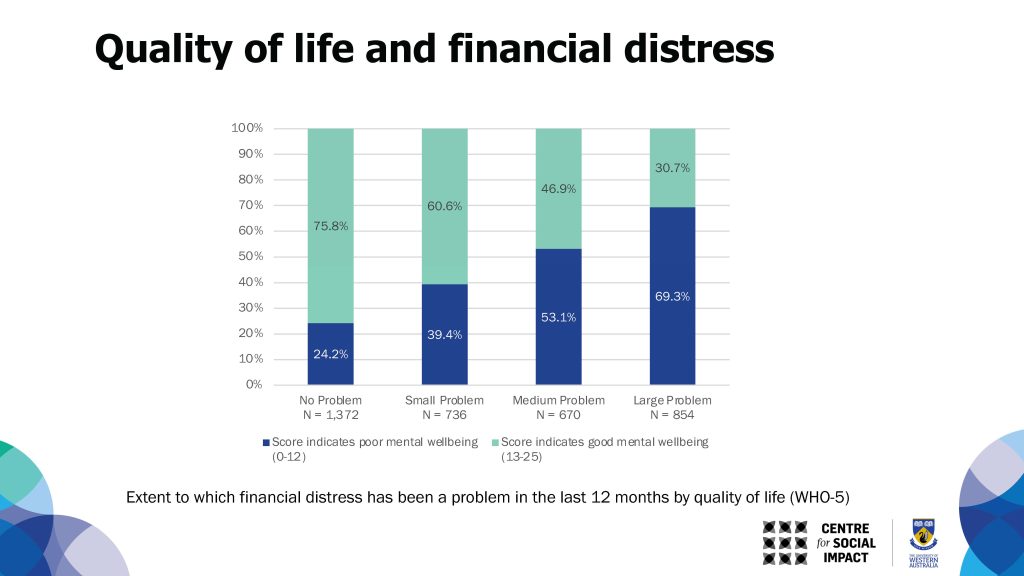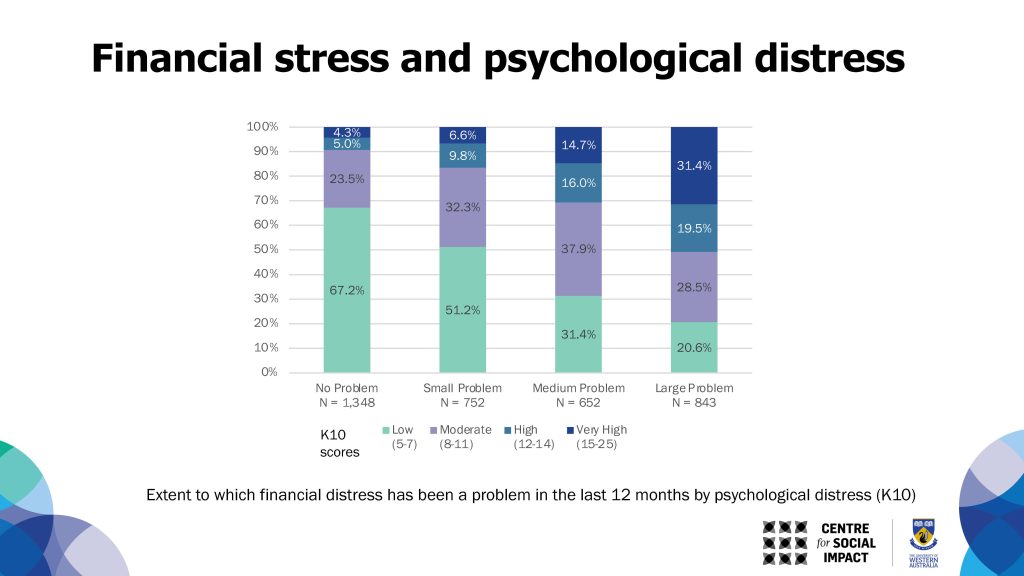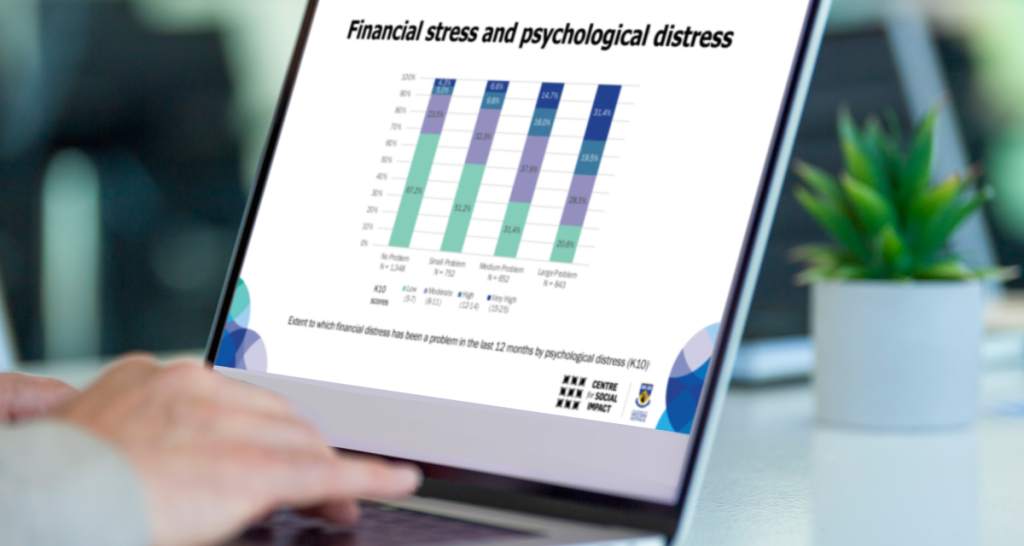As we wrap-up Anti-Poverty Week 2025, Community Mental Health Australia (CMHA) is calling attention to a striking truth revealed through the Assisting Communities through Direct Connection (ACDC) project. Over four years of door-knocking and community outreach, we’ve heard and seen firsthand what the research now confirms: financial distress is deeply intertwined with mental distress and reduced quality of life.
The ACDC research, conducted by the Centre for Social Impact at the University of Western Australia, paints this picture clearly. The first graph shows that quality of life (measured by the WHO-5 scale) drops dramatically as financial distress increases. Among people who reported no financial problems, three in four (around 76%) had good mental wellbeing. But among those who said financial distress was a large problem, that number plummeted to just 31%, with 69% experiencing poor mental wellbeing.
The second graph tells a similar story for psychological distress (measured by the K10 scale). Of those who reported no financial distress, only 5% experienced very high psychological distress. But among those facing large financial problems, that figure jumped to over 30%, more than a sixfold increase.
In simple terms, as financial strain grows, mental wellbeing declines sharply.
This isn’t just a statistical relationship; it’s a lived reality for many Australians.
Over the past four years, ACDC teams have visited thousands of households across urban, regional and remote communities. We’ve seen how rising living costs, insecure housing, and limited access to services leave people struggling to stay afloat both financially and emotionally.
Kerry Hawkins, CEO of CMHA, says the research reinforces what communities have been telling us for years.
“These findings are a stark reminder that poverty is not just an economic issue, it’s a mental health issue. When people are under financial stress, their psychological distress increases and their quality-of-life plummets. This is not about individual resilience; it’s about systemic inequality.”
The ACDC research makes clear that mental health cannot be addressed in isolation from broader social and economic factors. Financial security, stable housing, and accessible community supports form the foundation of good mental health. Without addressing these root causes, efforts to improve mental wellbeing will continue to fall short.
As we recognise Anti-Poverty Week, CMHA is urging governments and service providers to invest in community-based supports that respond to both financial and mental distress. Strengthening local networks, improving service access, and tackling poverty at its source are essential steps toward building mentally healthy communities.
The evidence is in; financial distress and mental distress are inseparable. The challenge now is ensuring that policy and practice reflect that reality.




